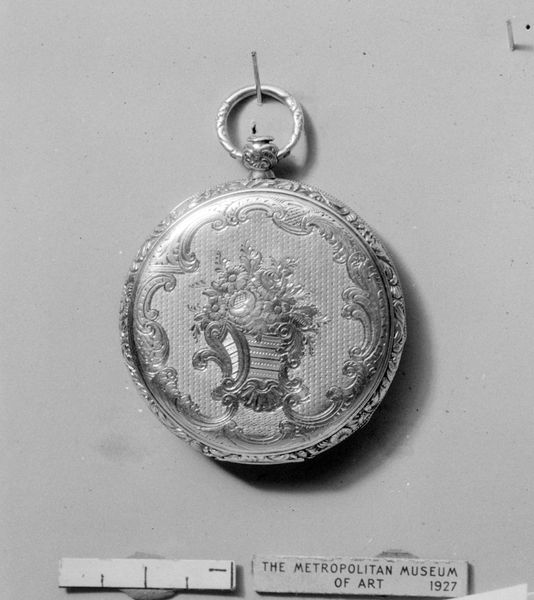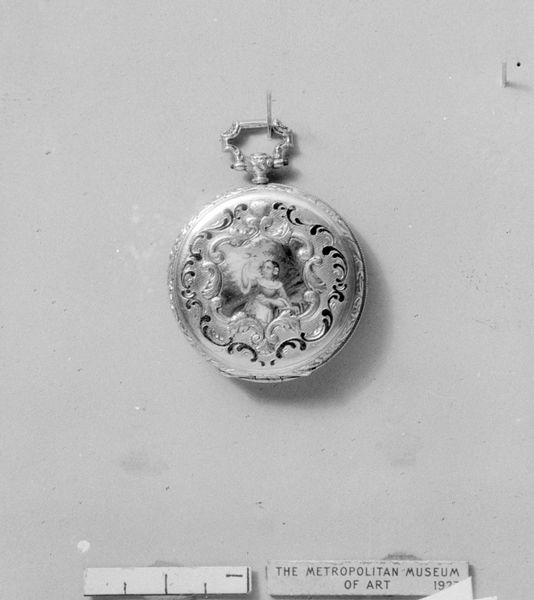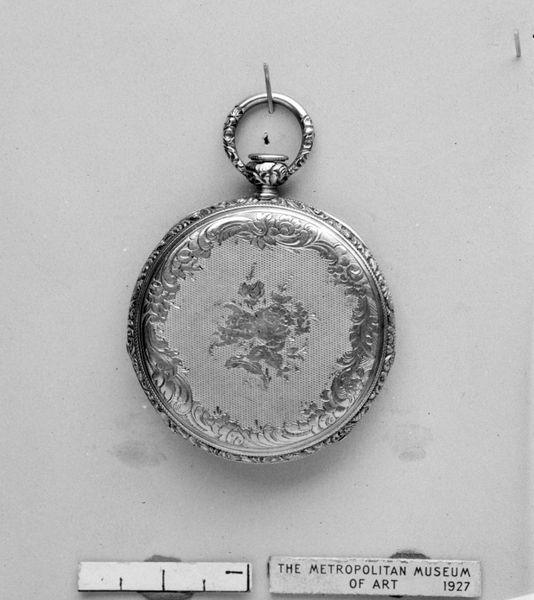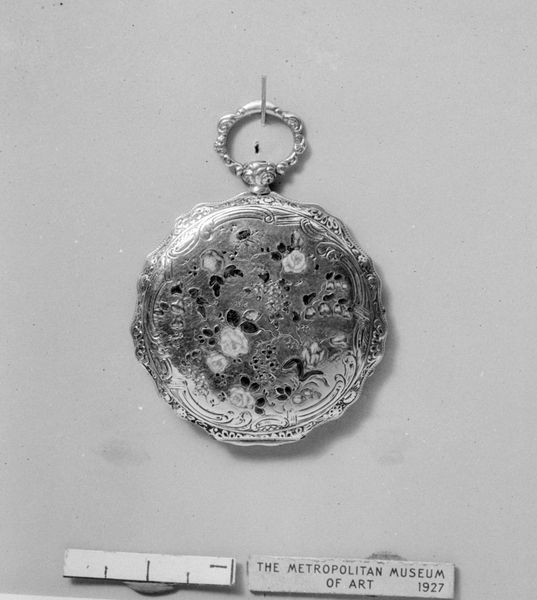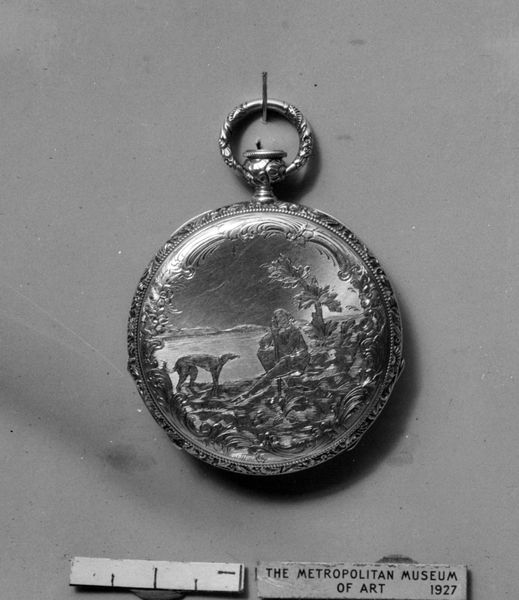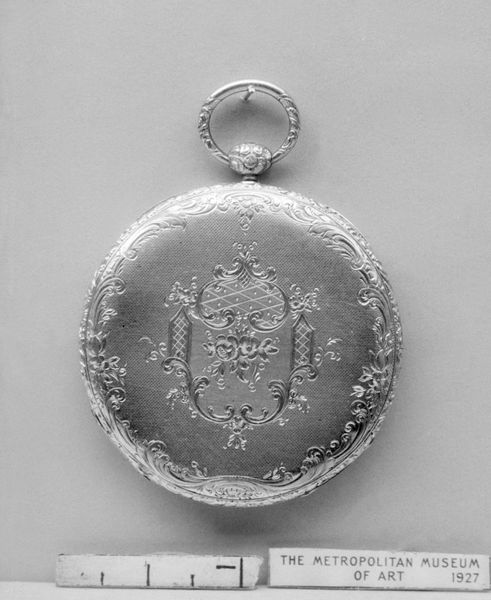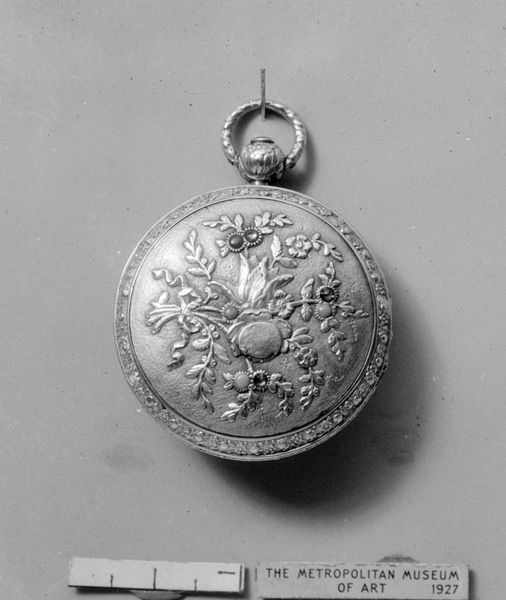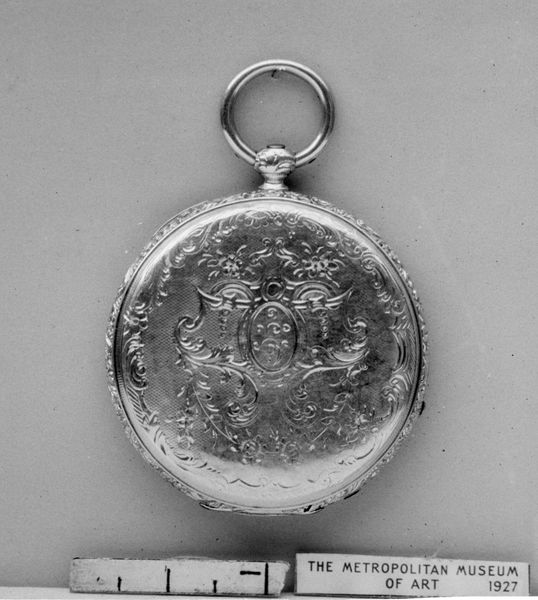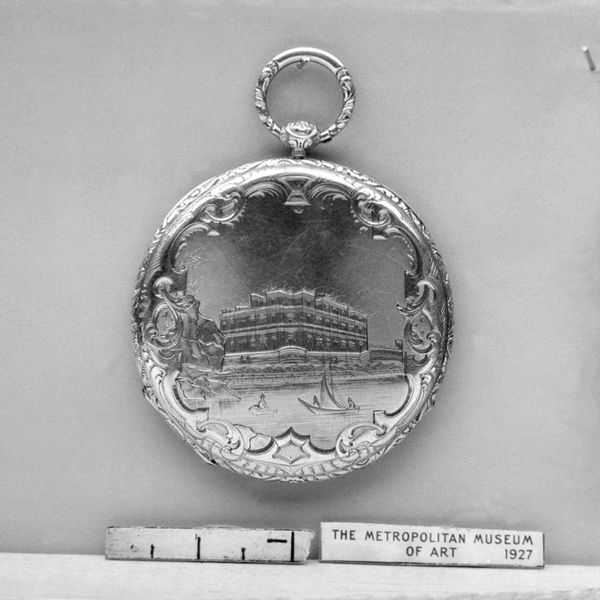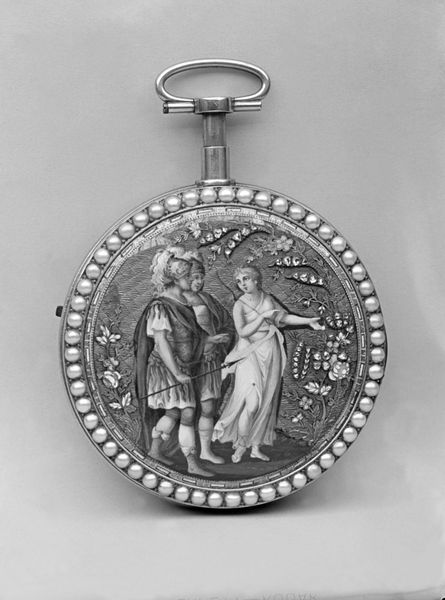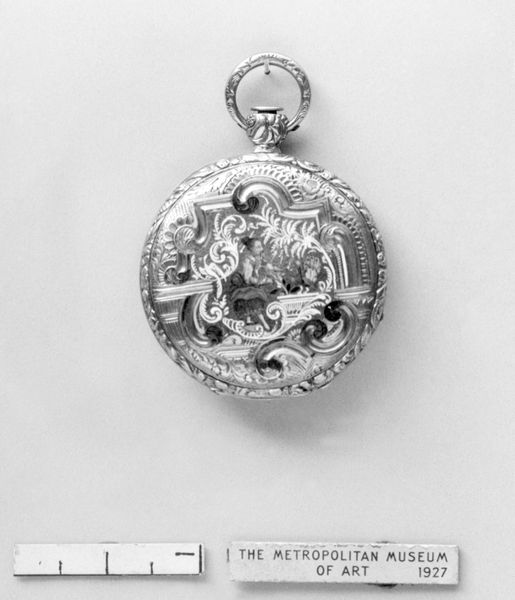
Dimensions: Diameter: 1 9/16 in. (4 cm)
Copyright: Public Domain
Editor: This is a watch, believed to have been made sometime between 1825 and 1855, by the Firm of Vaucher Frères. The watch is engraved, depicting a figure on horseback within a landscape. The detail is just incredible. How would you approach discussing this? Curator: For me, the critical aspects lie in understanding its production. What techniques were used to create such intricate engraving on this scale? Consider the labor involved, the skill required to manipulate the materials. Also, the societal context matters. Who would commission and own such an item? Editor: So, it's less about the figure on horseback, and more about who was buying them? Curator: Exactly. This isn't simply decorative art. It's an indicator of class, of access to specialized labor and rare materials. What statements are being made about taste, or wealth? The depiction of the figure on horseback within a baroque-inspired landscape further emphasizes power. And what processes beyond the engraving were involved? How does the materiality of the watch contribute to the artwork's message? Editor: I see what you mean. The very act of creating something so elaborate, speaks volumes. It’s less about admiring the scene and more about understanding the culture of luxury that allowed this scene to even exist on a watch. Curator: Precisely! The 'decorative' aspect of the piece also belies a whole structure of skilled craftsmanship. Its purpose beyond telling time invites questions about its relationship with material culture. Editor: Thanks! Thinking about art through the lens of production adds so much more depth. Curator: Indeed! We go beyond aesthetics and question the very foundation upon which artworks are created.
Comments
No comments
Be the first to comment and join the conversation on the ultimate creative platform.
